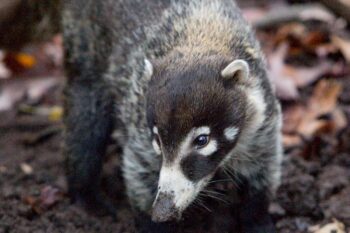White-Nosed Coati: A Common Sight in the Mexican Caribbean
Estimated reading time: 3 minutes
The White-Nosed Coati, also known as Pizote or Coatimundi, is a frequent visitor in the Mexican Caribbean. Often spotted in hotel corridors near jungles or mangroves, this curious mammal is always on the move, searching for food. Its playful behavior and adaptability make it a fascinating part of the region’s wildlife.

This kind of animals are omnivores, their diet consists largely of insects, spiders, earthworms and other invertebrates, and also ripe fruits.
They are of diurnal habits, and most of the time they are also gregarious. Thus, they are active during the day and rest at night. To sleep, it prefers high places, such as the canopy of trees, where it builds the nest.
Local Spanish names for the species include pizote, antoon, and tejón, depending upon the region. It weighs about 4–6 kg (8.8–13.2 lb).
However, males are much larger than females: small females can weigh as little as 2.5 kg (5.5 lb), while large males can weigh as much as 12.2 kg (27 lb).
On average, the nose-to-tail length of the species is about 110 cm (3.6 ft) with about half of that being the tail length.
Source: Wikipedia




